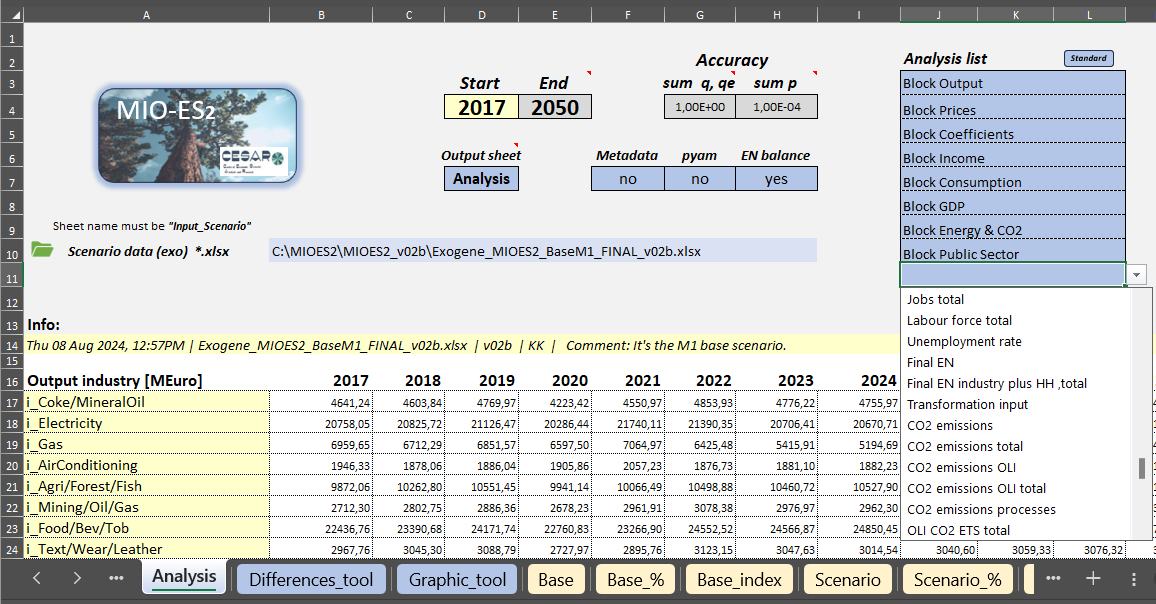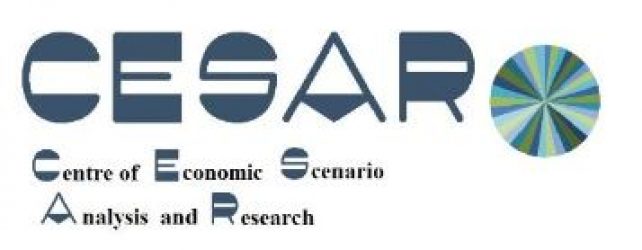Strategic Autonomy Rules for Trade in European Regions (STARTER): between free trade agreements and Open strategic Autonomy (for ESPON, co-funded by the European Union, Interreg)
The ESPON STARTER project aims to analyze the regional effects of scenarios related to Open Strategic Autonomy (OSA). The project involves:
-
- Examining the impact of diversification benchmarks for strategic raw materials outlined in the European Union’s Critical Raw Minerals Act (ECRMA).
- Assessing the regional effects resulting from concessions in Free Trade Agreements (FTA), specifically those contributing to diversification targets for strategic raw materials.
- Translating exogenous shocks into policy recommendations and conducting regional-sectoral case studies to provide in-depth analysis of the effects of these scenarios, considering endogenous characteristics, policies, and industrial conditions.
The project consortium comprises CESAR as the coordinator, CEPREDE/University of Madrid, University of Valencia, University of Zaragoza, University Jaume I, NASUVINSA (Pamplona), BC3 (Bilbao), University of Bordeaux. Besides the coordination, CESAR also leads one case study on the Carbon Border Adjustment Mechanism (CBAM) and on the diversification of the supply of fossil fuels in the short-run. The project started in September 2024 and is expected to run until December 2026.
MIO-ES 2.0 (2024): The new macroeconomic input-output model with integrated energy system
This model version (MIO-ES 2.0) continues the first version of MIO-ES that had been constructed in a joint effort between CESAR and UBA (Umweltbundesamt). The emphasis of MIO-ES 2.0 is on (i) an improved integration of updated (2017) energy balances, (ii) an improved linkage to bottom-up models as well as datasets with new parameterisations in two different modules, and (iii) detailed and further developed modelling of households, investment and the public sector. The full model including all behavioural and definition equations as well as data preparation has been implemented in Python and uses Excel as a user interface for controlling the model (data input and exporting results). Model running time has been reduced significantly by this procedure and result data sets can be presented in Excel as well as in a graphic tool. The main innovation in task (i) comprises the construction of two fully consistent layers: energy in the monetary input-output table and energy in the physical energy balance. That has as a prerequisite a full one-to-one correspondence of industries, as well as energy goods in the input-output table and in the energy balance for the new base year 2017. The linkage to bottom-up models and datasets is carried out in two different modules that can be used alternatively in the model. In one module, bottom-up model results (NEMO, INVERT-EE) are inserted into MIO-ES, whereas in the other module, behavioural equations for transport and heating are specified. The modelling of energy demand of industries has been completely revised in MIO-ES 2.0 by explicitly modelling process specific energy efficiency and shifts between processes in production. Household heterogeneity in the new model is described at the level of 10 household types (quintiles of income * rural/urban area) with different consumption structures and different behaviour. Investment by industries is mainly endogenous, but is also an indirect policy instrument, driven by subsidies and other support measures. The public sector is disaggregated into several tax and expenditure categories with special emphasis on climate and energy relevant categories.

DIAMOND, Horizon 2020-Project (https://climate-diamond.eu/)
The DIAMOND project will update, upgrade, and fully open six IAMs (Integrated assessment Models) that are emblematic in scientific and policy processes, improving their sectoral and technological detail, spatiotemporal resolution, and geographic granularity. It will further enhance modelling capacity to assess the feasibility and desirability of Paris-compliant mitigation pathways, their interplay with adaptation, circular economy, and other SDGs, their distributional and equity effects, and their resilience to extremes, as well as robust risk management and investment strategies. This will be done via integration of tools and insights from psychology, finance research, behavioural and labour economics, operational research, and physical science. We will develop a transdisciplinary scientific approach to legitimise the implementation process and co-create research questions that stretch the frontiers of climate science, as well as establish vibrant communities of practice to transparently open model enhancements and to develop capacities, thereby lowering the entrance barriers to the established IAM community. The project started in December 2022 and is expected to run until November 2026.
SEIM-UK: The new socio-economic impact model for the UK
This model builds on former work for City REDI (University of Birmingham), where a multi-regional input-output (IO) framework for the UK has been constructed. Thos first simple static IO model has been used for several applications of impact analysis for the UK and its regions (https://www.birmingham.ac.uk/schools/business/research/research-projects/city-redi/socio-economic-impact-model-for-the-uk).
This database has been revised and complemented by full sectoral accounts for household income distribution. The original IO framework has been aggregated to a system with 30 industries and 12 (NUTS 1) regions. The actual SEIM-UK model is dynamic (scenarios until 2040) and has an emphasis on (i) modelling consumer demand and income distribution with feedbacks from prices to demand (income and substitution effect), (ii) substitution between capital and labour (digitalisation) with total factor productivity effects of R&D and different labour occupations, and (iii) labour supply (potential labour shortages) and demand and wage setting at the level of occupations by industries. The model has been used for impact analysis (levelling-up policies for UK regions, impact of international students in the UK, etc.) and for quantifying the economic cost of labour shortages in a digitalization-scenario.
LOCOMOTION (Low carbon society: An enhanced modelling tool for the transition to sustainability)
LOCOMOTION is a new research and innovation project funded under the EU’s Horizon 2020 Programme that focuses on the further development of the MEDEAS Integrated Energy-Economy-Environment-Society Assessment Model (IAM). MEDEAS successfully addresses a number of known shortcomings of other IAMs such as the lack of proper consideration of biophysical constraints to energy availability or the consistent integration of climate change damages in impact assessments. In LOCOMOTION, the scope of the model will be expanded by adding new dimensions and improving existing ones (economy and finance, energy technologies, factors of human wellbeing, mineral and land availability, environmental factors, etc.). New methodologies (dynamic econometric multi-regional input-output analysis, micro-simulation and System Dynamics) will be applied and well-developed functionalities
from other models integrated. Modelling results will be available to scientist as open software, including extensive technical documentation. Policy-makers and civil society will have a reliable and user-friendly scenario tool in hand, which allows them to assess the impacts of different policy scenarios on the sustainable transition to a low-carbon society.
https://www.locomotion-h2020.eu/
MIO-ES: A macroeconomic input-output model with integrated energy system and links to bottom-up models
CESAR engages in building a macroeconomic input-output model with an integrated energy system (MIO-ES) for Austria in close cooperation with the Austrian Federal Environmental Agency (UBA). The focus of MIO-ES is the integration of the energy balance flows as well as of established bottom-up datasets and results of partial energy models for transport (NEMO), heat and electricity generation (TIMES) and buildings into the model (moneatry/physical flows link).
The MIO-ES model has an input-output (IO) core and is a fully fledged model in macroeconomic terms. Income distribution and consumption of housholds is modelled at the level of ten income groups (deciles). Energy consumption of households is determined in the bottom-up models and is incorporated into MIO-ES via well defined links between monetary and physical flows at the disaggregate level. MIO-ES also comprises modules for the labour martket and for the public sector that can be used to close the model.
The potential for application of MIO-ES covers all market based instruments (CO2 prices and taxes, subsidies and tax incentives), as well as detailed bottom-up measures ofg decarbonization and energy efficiency enhancement (e-mobility, modal split, building renovation rates, etc.) in the transport, heating and electricity generation sector.
Impact of recent energy policy initiatives (100% renewable electricity, e-mobility) on electricity sector investment needs and their macroeconomic impact
Investment in grid infrastructure and electricity generation capacities is the fundamental requirement for realizing a scenario of 100% renewable electricity until 2030 in Austria. Such a scenario foresees an increase in electricity generation from hydropower, PV and wind energy of 29 TWh until 2030. In order to implement this increase of renewable generation, investment of about 28 bill € in generation capacity is needed. In order to efficiently integrate this renewable increase in the Austrian electricity sytsem, investment of about 4,4 bill € in the grid would be needed. Further grid investment needs are triggered by the increasing use of e-mobility and heat pumps.
The study quantifies the macroeconomic and sectoral impacts of the full (cumulated) investment package of 46 bill €. The grid investment is financed via higher grid tarifs for all electricity users. That leads to an additional increase in the consumer price of electricity of about 0,3% p. a. Besides the positive economic impacts, the investment significantly decreases the CO2 emissions linked to electricity and heat generation.
Climate policy and energy transition for heating in a regional economic perspective
A modelling exercise reveals the regional economic impact of ambitious climate policy objectives for heating for three Austrian NUTS 2-regions: Niederösterreich, Salzburg and Tirol. For the purpose of the study, regional input-output (IO) models for the three regions have been constructed, applying the CHARM method to officially available regional data. The resulting IO models have been enlarged to Social Accounting Matrix (SAM) multiplier models by endogenizing private consumption via income distribution to households and the finacial flows between the household and the public sector.
The policy measures comprise: (i) reduction by 50% of oil-based heating systems until 2030, (ii) reduction by 33% of gas-based heating systems until 2030, and (iii) icrease of the renovation rate of dwellings to 2% p.a. The fossil-based heating systems are to be replaced by a mix of biofuels, heat pumps, and district heating.
Investment of about 1,7 bill € induces an extra value added of 470 mill € with 230 mill € in Niederösterreich, 140 mill € in Salzburg, and 100 mill € in Tirol. Employment effects are significant as well: 4,600 jobs in Niederösterreich, 2,150 in Salzburg, and 1,800 in Tirol. The most benefitted industries are construction, wood products, machinery, metal construction and non-metallic minerals (stone and glass).Energy consumption of households in these Bundesländer is reduced is significantly reduced, by about 20%. The CO2 emission reduction amounts to 1.3 mill tons.
Socio-Economic Impact Modelling in the West-Midlands (SEIM-UK): An interregional input-output approach
The main objective of the project is the construction of an impact assessment model, based on a multi-regional input-output (IO) framework for the UK. The multi-regional model will cover 37 regions of the UK and it will include foreign trade flows with other countries, depending on the available information. Disaggregation of results of impact analysis below the level of West-Midlands will also be considered.
For model building, the focus will be on three different features: (i) globalisation, technological change, and structural change in the labour market; (ii) household heterogeneity and socio-demographic change; and (iii) change in trade patterns and value added chains.
Collaboration and provision of professional services for Tecnalia Research and Innovation (Bilbao) in the framework of the MySmartLife project
In this project CESAR engages in setting up regional IO models and regional SAM multiplier models at the city level. For this purpose, all available datasets from EUROSTAT, WIOD and others ources have been combined, applying the CHARM method. Examples of cities for which the methodology has been applied cover Hamburg, Nantes, Rijeka, Bydgosz, and others. The SAM multiplier models cover indirect (IO multiplier), induced (SAM multiplier with endogenous consumption) and net effects (SAM multiplier with budget neutral financing) of shocks and policy measures.
Tecnalia uses the resulting models for simulating the socio-economic impacts of plausible pathways for the decarbonisation of the energy systems by energy planning of cities.
SHAIO2019_CityBilbao.pptx

